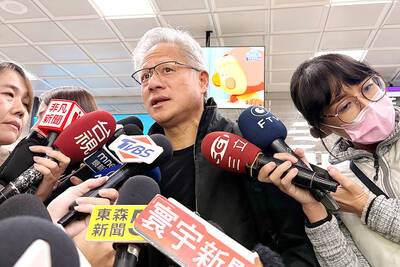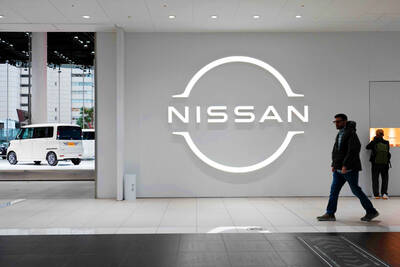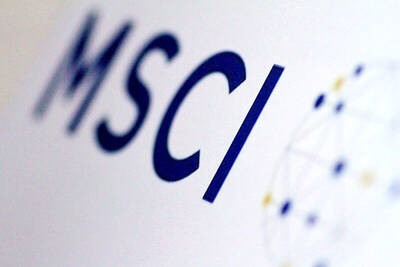The S&P 500 and NASDAQ set record closing highs on Friday as investors bought energy, financial and materials shares and sold big tech stocks in anticipation of new fiscal aid from Washington to help the US economy recover.
The major indices traded in a tight range during the week in which investors rotated out of growth-oriented stocks that have dominated an almost year-long rally and bought cyclical and under-priced value stocks.
The S&P energy, financials and materials sectors rose on expectations they will benefit from a reopened economy, while heavyweights Apple Inc, Tesla Inc and Microsoft Corp were lower most of the session. All three closed higher in a late market surge.
Value and cyclicals outperform in a rising interest rate, higher-growth environment, which the US economy is on the cusp of entering, said Thomas Hayes, chairman and managing member of hedge fund Great Hill Capital LLC in New York.
“We’re underestimating the lag effect of all the money in the system as more and more vaccinations are delivered and as more of the country reopens” from business shutdowns, he said.
“We are continuing this rotation that would be consistent with the new business cycle, and as [bond] yields go up, value and cyclicals will lead,” Hayes said.
The Cboe Volatility Index, Wall Street’s so-called fear gauge, closed below 20 for the first time since February last year.
A sharp drop in new COVID-19 cases and hospitalizations in recent weeks have helped drive markets to new highs, though a near-term pullback could occur from the new coronavirus variants and potential snags in vaccine distributions.
The latest data showed US consumer sentiment unexpectedly fell early this month as households were still worried about the economy despite expectations for additional stimulus.
A Reuters poll showed the US economy is expected to reach pre-COVID-19 levels within a year as the proposed US$1.9 trillion fiscal bill helps boost economic activity, but employment will likely take more than a year to fully recover.
US President Joe Biden turned to a bipartisan group of local officials for support on his US$1.9 trillion coronavirus relief plan to help millions of unemployed workers and for schools to reopen.
The Lipper data late on Thursday showed US-based stock funds attracted US$22.9 billion in the week to Wednesday, the largest weekly inflow since March 2008.
US stock markets will be closed tomorrow for the Presidents Day holiday.
The S&P 500 set hit an all-time peak on Friday, while the NASDAQ and Dow did earlier in the week
The Dow Jones Industrial Average rose 27.7 points, or 0.09 percent, to 31,458.4, the S&P 500 gained 18.45 points, or 0.47 percent, to 3,934.83 and the NASDAQ Composite added 69.70 points, or 0.5 percent, to 14,095.47. Volume on US exchanges was 13.27 billion shares.
The small-cap index rose for the fifth week out of six full weeks this year. PayPal Holdings Inc rose 4.7 percent after several brokerages raised their price targets following the payments company’s investor day call a day earlier.
Walt Disney Co reported a surprise quarterly profit. However, its shares fell 1.7 percent from a record high after a more than 13 percent run-up to its results over the last two weeks.
Dating app operator Bumble Inc jumped 7.3 percent, a day after a stellar debut sent its shares up more than 75 percent. Chief executive officer Whitney Wolfe Herd’s stake in the women-centric dating app operator was worth nearly US$2 billion.
Advancing issues outnumbered declining ones on the NYSE by a 1.35-to-1 ratio; on NASDAQ, a 1.22-to-1 ratio favored advancers.
The S&P 500 posted 52 new 52-week highs and no new lows; the NASDAQ Composite recorded 261 new highs and 17 new lows.

PERSISTENT RUMORS: Nvidia’s CEO said the firm is not in talks to sell AI chips to China, but he would welcome a change in US policy barring the activity Nvidia Corp CEO Jensen Huang (黃仁勳) said his company is not in discussions to sell its Blackwell artificial intelligence (AI) chips to Chinese firms, waving off speculation it is trying to engineer a return to the world’s largest semiconductor market. Huang, who arrived in Taiwan yesterday ahead of meetings with longtime partner Taiwan Semiconductor Manufacturing Co (TSMC, 台積電), took the opportunity to clarify recent comments about the US-China AI race. The Nvidia head caused a stir in an interview this week with the Financial Times, in which he was quoted as saying “China will win” the AI race. Huang yesterday said

Nissan Motor Co has agreed to sell its global headquarters in Yokohama for ¥97 billion (US$630 million) to a group sponsored by Taiwanese autoparts maker Minth Group (敏實集團), as the struggling automaker seeks to shore up its financial position. The acquisition is led by a special purchase company managed by KJR Management Ltd, a Japanese real-estate unit of private equity giant KKR & Co, people familiar with the matter said. KJR said it would act as asset manager together with Mizuho Real Estate Management Co. Nissan is undergoing a broad cost-cutting campaign by eliminating jobs and shuttering plants as it grapples

The Chinese government has issued guidance requiring new data center projects that have received any state funds to only use domestically made artificial intelligence (AI) chips, two sources familiar with the matter told Reuters. In recent weeks, Chinese regulatory authorities have ordered such data centers that are less than 30 percent complete to remove all installed foreign chips, or cancel plans to purchase them, while projects in a more advanced stage would be decided on a case-by-case basis, the sources said. The move could represent one of China’s most aggressive steps yet to eliminate foreign technology from its critical infrastructure amid a

MORE WEIGHT: The national weighting was raised in one index while holding steady in two others, while several companies rose or fell in prominence MSCI Inc, a global index provider, has raised Taiwan’s weighting in one of its major indices and left the country’s weighting unchanged in two other indices after a regular index review. In a statement released on Thursday, MSCI said it has upgraded Taiwan’s weighting in the MSCI All-Country World Index by 0.02 percentage points to 2.25 percent, while maintaining the weighting in the MSCI Emerging Markets Index, the most closely watched by foreign institutional investors, at 20.46 percent. Additionally, the index provider has left Taiwan’s weighting in the MSCI All-Country Asia ex-Japan Index unchanged at 23.15 percent. The latest index adjustments are to